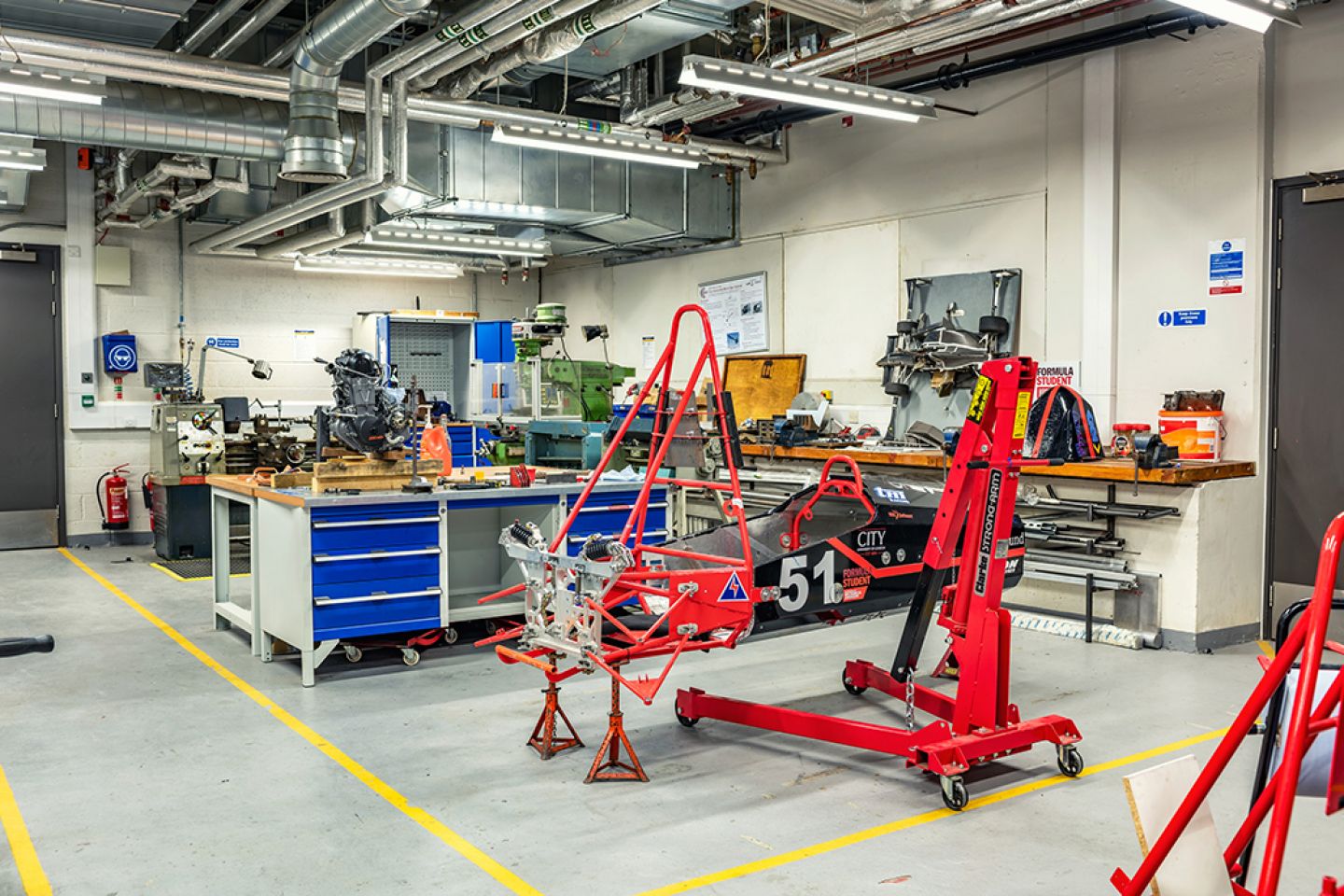Who is it for?
The City St George's Racing Team offers our engineering undergraduates the opportunity to take part in the world's largest student motorsport event - Class 1 Formula Student.
How does it work?
The team will design and build a single-seat racing car, competing against 120 other teams and testing the car's speed, acceleration, handling and endurance at the world-famous Silverstone race circuit, home of the British Grand Prix.
Organised by the Institution of Mechanical Engineers (IMechE) as a student-run project, Class 1 Formula Student gives students the opportunity to develop their skills and put them into practice.
Stage one: Development
The first stage of producing the car is either developing and evolving last year’s car or starting the design from scratch.
Stage two: Design
The next step is designing a 3D model on a computer. All the components are tested on software to ensure that they will survive the forces the engine will be subjected to. All sub-teams combine their knowledge and skills to bring together the different parts for main car.
Stage three: Manufacturing
The detailed design specifications for each part are given to the technicians who will begin manufacturing. Once the parts are ready, assembly and adjustment can begin.

Stage four: Testing
Once constructed, the car will be tested for speed, acceleration, handling and endurance at the Silverstone Circuit.
What software do we use?
The team uses an array of advanced software programmes for the project.
These include:
- SolidWorks: computer aided design (CAD) software used for designing products and product components.
- ANSYS Mechanical (FEA software): used for identifying the weak points of the car and whether the components can withstand the subjected loads.
- Ricardo Wave (engine simulation software): used for simulating the engine and all of the auxiliary components.
- ANSYS Fluent (CFD software): used for simulating fluid flow within the air intake and exhaust systems.
- MSC Adams (MBD software): used for suspension modelling and optimisation.
